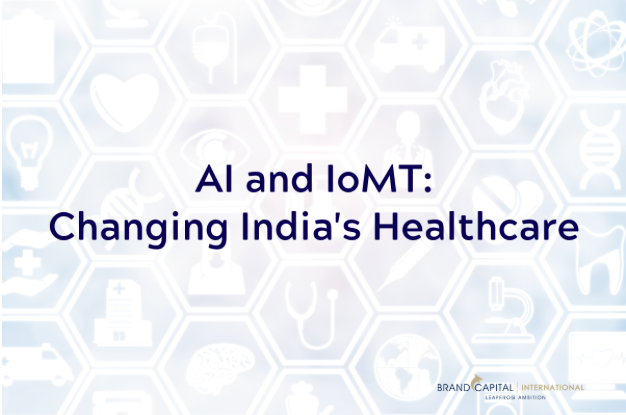
In 1983, India formed the National Health Policy of India (NHP) prioritizing healthcare to be accessible to all its people by the year 2000. Their goal was to create a network of primary healthcare services, led by health volunteers and technologies that increased collaboration amongst healthcare professionals and facilities. In the new millenium, NHP 2002 was introduced, with the objective to build healthcare services through a decentralized system and emphasized on using non-allopathic forms of medicine including, ayurveda, unani, and siddha.
While India has made strides in altering their healthcare system for the better, there is still a great disparity in resources, doctors, and treatment options, especially towards rural and low-income communities. Luckily, the emergence of Artificial Intelligence (AI) and the Internet of Medical Things (IoMT) within the healthcare space is bridging this gap and creating new avenues to improve the cost, efficiency, and accessibility in India’s current healthcare system.
Artificial Intelligence (AI)
AI is defined as the “capability of devices to learn on their own without an explicit program and act on the information gathered cognitively,” according to PWC’s The Bengal Chamber. Essentially, it’s goal is to mimic a human’s ability to learn -- and India has put it to good use.
Breast Cancer Screening
In India, 50% of women diagnosed with breast cancer die within 5 years. The alarming fatality rate is partly due to the lack of detecting breast cancer early, which can be attributed to the lack of facilities and specialized radiographers -- which are costly. AI- based cancer screening software, using machine learning intelligence over thermographic images, detects breast cancer at an earlier stage -- compared to even traditional diagnostic methods -- and is low-cost, easy to operate, and portable. This AI-based screening method is non-contact, painless, and free of radiation, making it possible for women of all age groups and socio-economic status to endure frequent screenings.
Portable X-Rays
India is one of the largest countries to house tuberculosis, and as a result many tuberculosis cases go untreated because the vast majority of them are located in underserved rural areas, making detection and treatment inaccessible. Fortunately, a Delhi-NCR hospital, in association with the Government of Haryana, is utilizing mobile vans to perform digital X-rays, processed by AI -- providing 85% accuracy. This AI-based technology allows doctors and healthcare professionals to drive to remote villages to test, catch, and treat tuberculosis early. Within the first three months of the project, the hospital claims to have detected 244 positively diagnosed patients, out of 618 suspected patients in total. With the combination of X-rays and AI, healthcare professionals are able to provide solutions to patients all around India efficiently and with little cost.
Internet of Medical Things (IoMT)
IoMT “refers to the worldwide network of interconnected medical devices and applications,” according to PWC’s The Bengal Chamber. It’s versatility allows technology to be used in a clinical and non-clinical settings, and India has started to integrate IoMT into their own hospitals and medical equipment.
Smart Ambulance
When a patient is taken to a hospital in an ambulance, time is of the essence. And unfortunately, the inability to automatically provide details of a patient’s vitals to the nearest hospital hinders a physician's ability to prepare for treatment, resulting in a worsened condition, or even death. With the integration of IoMT, India has begun to integrate IoMT sensors into ambulances. These sensors provide a patient’s vitals in real time to a healthcare cloud ecosystem where physicians are able to analyze vitals and prepare for treatment before the patient reaches the hospital -- saving time and saving lives.
Intensive Care Unit (ICU) Vital Monitoring
In an ICU, monitoring and reporting a patient's vitals regularly is the norm. However, with manual reporting from doctors and nurses, there are times in between rounds where one can miss spikes in a patient’s vitals. Within the last two years, a leading hospital in India has run a pilot program on 10 ICU beds, where IoMT sensors -- attached to bedside patient monitors -- detect spikes on vitals on a continuous basis. Utilizing these monitors has mitigated the risk of missing critical changes in a patient’s heart rate, blood pressure, and other vital signs. The IoMT sensors trigger alarms when a vital meets a certain threshold and displays insightful data when physicians visit. These sensors not only provide accurate analysis of vitals, but also save physicians the trouble and time of manually operating bedside patient monitors to see spikes within the last few hours of a patient’s stay.
Stay updated on our news and events! Sign up to receive our newsletter.